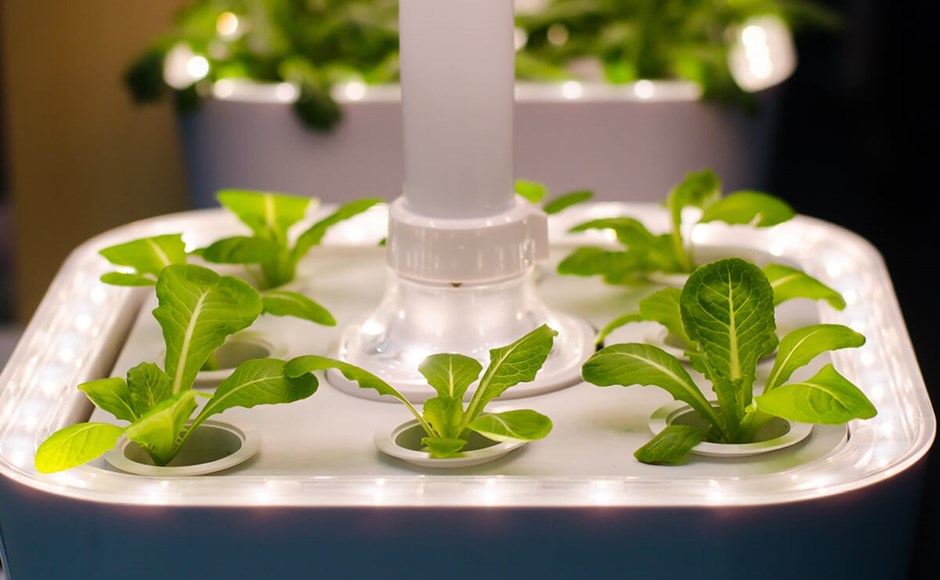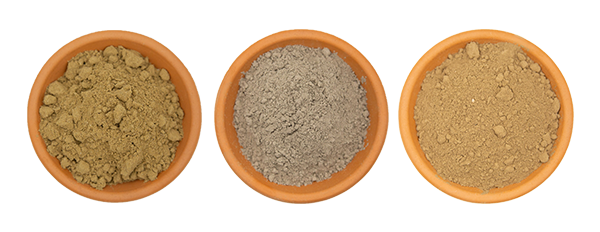Going Deep with 10 Deep Water Culture Essentials
By Thomas Forrest from Maximumyield | 3 December 2018

Takeaway: Deep water culture hydroponics is a great method for fast growing, heavy yielding crops. It’s accessible to new growers, but it’s not fail-safe. Here are 10 essential guidelines to follow for keeping your system running smoothly.
Deep water culture (DWC) is a hydroponic method of horticultural production that suspends plants above an aerated reservoir solution. This solution is made of a rich, oxygenated mixture of water and a hydroponic fertilizer. Deep water culture cultivationcan be very effective for fast growth and heavy yielding crops as plants have direct access to oxygen and food in the form of functional mineral compounds. However, this method of hydroponic production also has certain risks that may cause the rapid demise of your favorite plants. To keep your crop healthy and happy in any kind of recirculating DWC system, ensure you follow these 10 essential guidelines
1. pH
When you talk about the acidity or alkalinity of a solution, you’re talking about pH. This is a measure of the potential hydrogen ions and it is expressed on a logarithmic scale between 1-14. Lower numbers are more acidic and higher numbers more alkaline.
The pH of a solution drastically affects a plant’s ability to uptake nutrients and can influence whether the growing environment is hospitable for beneficial bacteria. That’s because the ionic exchange, which describes the transfer and changing of different compounds into forms absorbable by the plant, is influenced by pH.
For DWC systems, the ideal pH level is 5.5-5.8. This allows for effective nutrient uptake while reducing the risks of pathogens or disease. A higher pH can provide a welcoming environment for root problems like pythium, while too low pH can prevent nutrient uptake and be harmful to delicate root hairs.
It’s always recommended to use a nutrient regimen specifically designed for recirculating water-based systems if growing with DWC, as the pH and exchange capacity has been precisely calculated to keep your garden flourishing. Certain nutrients are balanced with a mixture of compounds that stabilize the pH of a hydroponic solution while encouraging rapid uptake of essential minerals.
2. EC/TDS/PPM
Once you’ve made up your nutrient-rich solution and checked its pH, you need to make sure the concentration of food—dissolved mineral nutrient compounds—in the water is suitable for your crops and their stage of growth. If too much or too little food is available, it can be harmful to the plant and cause nutrient burn, lockout certain elements, or retard plant growth. Electrical conductivity (EC), total dissolved solids (TDS), and parts per million (ppm) are all different terms for the same measurement: the amount of ionic salts—those dissolved mineral nutrient compounds—in an aqueous solution.
Deep water culture systems generally require a lower EC than other methods of hydroponic production because the plants have direct access to nutrient compounds without a structurally supportive substrate. We recommend always following feed charts but err on the lower side of concentration ratios. Generally, an EC of 0.8-1.8 is the ideal range for the complete life cycle of any heavy fruiting or flowering plant.
3. Aeration and Waterflow
Plant growth requires dissolved oxygen to allow root hair development and for use in transpiration. Dissolved oxygen refers to the level of free, non-compound oxygen (O2) present in water or other liquids (as the oxygen molecule in water (H2O) is bonded with another element (hydrogen) in a compound, it does not count toward dissolved oxygen levels).
In commercial hydroponic systems, the solution is usually aerated using large air-pumps or creating strong waterfall arrangements where the water surface is broken by a constant flow of liquid. Some undercurrent hydroponic designs allow for the aeration of a central reservoir as well as each individual pot. Water flow constantly moves aerated liquid around the system, ensuring consistent nutrient delivery to every plant. Water movement also influences nutrient uptake, as insufficient flow or stagnant areas can cause toxicities and deposits of unused nutrient.
4. Water Temperature
Correct water temperature is the ultimate key to successful recirculating hydroponic production. The temperature of the life-giving liquid solution influences nutrient uptake, dissolved oxygen, and pH. It can be the cause of happy, healthy, glowing white roots or dark, smelly, disease-ridden struggles.
If the water temperature is too high, the dissolved oxygen is reduced. Lower temperatures increase dissolved oxygen potential but cause slower plant growth. The water temperature also determines whether the liquid is habitable for living organisms. Higher temperatures with their reduced amounts of dissolved oxygen encourage anaerobic pathogens to attack delicate root hairs.
Keeping your water temperature optimized is a balancing act influenced by both external and internal factors (i.e. light, room temperature, system design, water pumps, air pumps, crop cycle). The golden range for water temperature is 64-73˚F. Cultivation facilities utilize water chillers, and sometimes heaters, to stay within these parameters.
5. Water Control and System Design
Now that you understand the important parameters of your hydroponic system, you need to keep them in check. Clever system design is crucial for effective growth throughout multiple growth cycles. There are many systems out there that are fantastic for the first few weeks but become impractical and frustrating after plant mass develops and the plumbing is put to the test.
Ideally, your hydroponic system will prevent light shining onto the water solution and provide ample water movement and aeration without accumulating algal growth. It should be easy to drain, clean, and maintain, even with a heavy fruiting tree in the system.
My advice for effective design is to always use plumbers tape on all pipe joins, err on the larger end of pipe sizing, and try to have the correct water monitoring technology to keep an eye on all your important parameters (pH, EC, and temperature).
6. Plant Spacing and Pot Sizing
Plants require much smaller pot sizes in DWC systems, as there’s no need to accommodate soil particles or substrate. Depending on personal preference, you may put many plants in a single large reservoir, multiple plants spaced in their own modules, or a combination approach. However, deleafing and checking individual plants can become difficult if plants are not spaced correctly. This also affects your support trellising and training later in the flowering stage. The important lesson here is to expect larger and faster growth than traditional soil cultivation, so prepare your spacing and netting accordingly.
7. Plant Height and Support
Plants will grow significantly faster in DWC systems, meaning they may require some innovative structures and supports. Some store-bought hydroponic systems have custom-designed cages to aid heavy fruiting plants and are extremely useful in attaining optimal plant spacing. If you’ve designed your own system, consider the available netting options you can install and efficiently access. Alternatively, the classic “yo-yo” solution is always adaptable for a variety of arrangements.
8. Seedlings and Substrates
When transplanting into any hydroponic system, it can be easy to damage fragile seedlings. Most hydroponic systems will use expanded clay, perlite, or a recycled glass medium to support for the initial developing root system. You can also use stone wool and keep an eye on the bottom of the cube until a healthy white root mass looks ready to burst into the DWC system. Always ensure your seedlings or cuttings have strong, established roots before transplanting into a hydroponic system.
9. Solution Changes
When it comes to changing the nutrient solution, it’s a cost verse reward calculation. Good modern hydroponic nutrients are designed to be pH stable and allow for effective uptake for one to three weeks. The solution will be at its most effective when used for the duration designated by the manufacturer. However, this time frame can be drastically influenced by how many nutrients your plants take up, water temperature, water filters and pumps, and aeration, alongside the variable factors from your home water source.
Ideally, I’d suggest changing out the solution every one to two weeks to maintain a fresh and healthy solution. This also deters the accumulation of harmful bacteria and pathogens that can cause havoc if left to breed uninhibited.
10. Automation
Deep water culture systems can be automated to reduce labor. Systems can be programmed using clever dosing units that control the input of nutrient and pH adjustment, while water temperatures can be maintained using reliable hydroponic chillers. Float valves can be used to refill the main reservoir. It depends on your budget as to the level of automation you can achieve in your DWC garden. However, optimized gardening requires constant vigilance, and automation equipment needs to be checked regularly to ensure everything’s working.
Deep water culture is a fun, seriously rewarding method of hydroponic growing that teaches new growers valuable lessons about the importance of root health, water quality, and contents. Just keep on top of the basics and you’ll be amazed at what you can grow.



